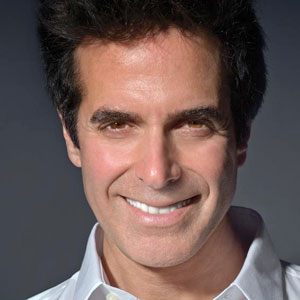You might think David Copperfield leads a charmed life: He can escape from ropes, chains, and prison cells, make a Learjet or a railroad car disappear, and even appear to fly above the stage. But the illustrious illusionist will be the first to admit that making all that magic takes a lot of hard work. And he recently told Dear Doctor magazine that his brilliant smile has benefitted from plenty of behind-the-scenes dental work as well.“When I was a kid, I had every kind of [treatment]. I had braces, I had headgear, I had rubber bands, and a retainer afterward,” Copperfield said. And then, just when his orthodontic treatment was finally complete, disaster struck. “I was at a mall, running down this concrete alleyway, and there was a little ledge… and I went BOOM!”Copperfield’s two front teeth were badly injured by the impact. “My front teeth became nice little points,” he said. Yet, although they had lost a great deal of their structure, his dentist was able to restore those damaged teeth in a very natural-looking way. What kind of “magic” did the dentist use?In Copperfield’s case, the teeth were repaired using crown restorations. Crowns (also called caps) are suitable when a tooth has lost part of its visible structure, but still has healthy roots beneath the gum line. To perform a crown restoration, the first step is to make a precise model of your teeth, often called an impression. This allows a replacement for the visible part of the tooth to be fabricated, and ensures it will fit precisely into your smile. In its exact shape and shade, a well-made crown matches your natural teeth so well that it’s virtually impossible to tell them apart. Subsequently, the crown restoration is permanently attached to the damaged tooth.There’s a blend of technology and art in making high quality crowns — just as there is in some stage-crafted illusions. But the difference is that the replacement tooth is not just an illusion: It looks, functions and “feels” like your natural teeth… and with proper care it can last for many years to come. Besides crowns, there are several other types of tooth restorations that are suitable in different situations. We can recommend the right kind of “magic” for you.If you would like more information about crowns, please contact us or schedule an appointment for a consultation. You can also learn more about this topic by reading the Dear Doctor magazine articles “Crowns & Bridgework” and “Porcelain Crowns & Veneers.”
Recent Posts
- The Importance of Emergency Dental Care: Timely Intervention is Key
- Delaying Wisdom Teeth Extraction Can Lead to Serious Issues
- Can an Abscessed Tooth Kill You? Symptoms and When to Seek Urgent Care
- How to Recognize and Effectively Treat a Dental Emergency
- Gum Disease and Heart Disease: Understanding the Connection

